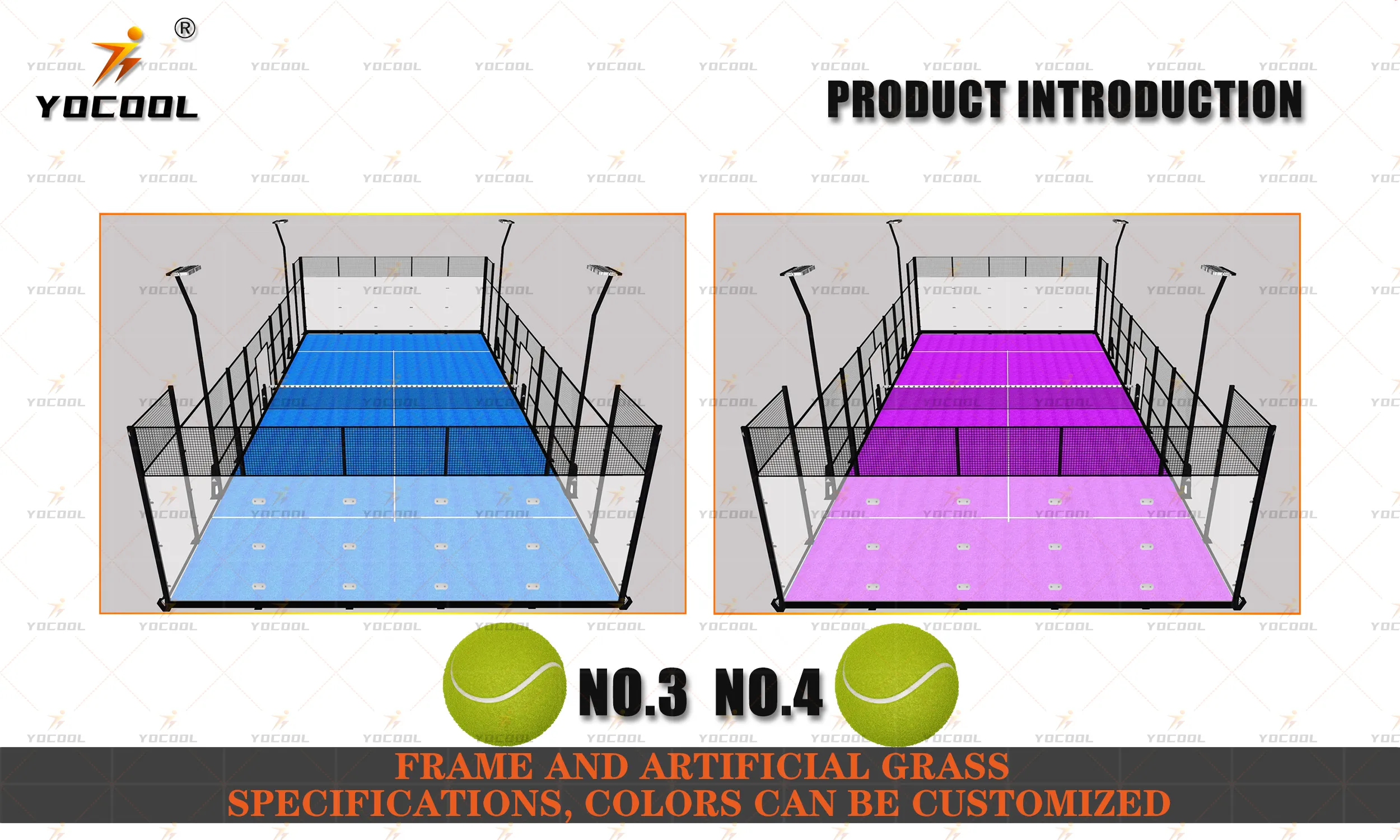

Understanding Padel Court Cost and Suppliers
Padel, a sport that combines elements of tennis and squash, is rapidly gaining popularity around the world. As the demand for padel courts increases, understanding the costs associated with building and maintaining these courts is crucial for investors, sports clubs, and enthusiasts alike. This article delves into the various factors influencing padel court costs and the suppliers that play a vital role in this burgeoning industry.
Factors Influencing Padel Court Costs
1. Construction and Materials The cost of constructing a padel court is primarily determined by the materials used. The playing surface can vary significantly in price, depending on whether you opt for artificial turf, concrete, or clay. Artificial turf is the most common choice due to its durability and lower maintenance costs, typically costing between $10 and $15 per square meter. In contrast, a concrete court can be more expensive initially but may offer a longer lifespan.
2. Court Dimensions A standard padel court measures 20m x 10m, but customization can lead to additional costs. If you require a larger or uniquely designed court, expect to pay more for materials and labor. Factors such as proper drainage systems and lighting installations also contribute to the overall cost.
3. Location The geographical location plays a significant role in the overall cost. Urban areas with high demand for sports facilities may have higher labor and material costs compared to rural locations. Furthermore, securing permits and adhering to local regulations can add to expenses, particularly in regions with strict building codes.
4. Labor Costs Labor costs can vary widely depending on the region and the expertise required. Hiring skilled workers for installation or specialized contractors can significantly increase costs, but can also ensure a higher quality court that meets competitive standards. The installation of glass walls, which are typical for padel courts, may require additional costs for skilled labor.
5. Maintenance and Upkeep While the initial investment in building a padel court is significant, maintenance costs should not be overlooked. Regular upkeep, including surface cleaning, repairs, and potential resurfacing every few years, can add to the long-term financial commitment.
Suppliers of Padel Courts

As the sport gains traction, a growing number of suppliers have emerged in the market offering various products and services for padel court construction. When selecting a supplier, consider the following
1. Reputation and Experience Look for suppliers with a proven track record in constructing padel courts. Reviews, testimonials, and past project portfolios can provide insight into their capabilities and reliability.
2. Quality of Materials Suppliers should offer high-quality materials designed to withstand weather conditions and frequent use. Inquire about the specific brands and types of surfaces they provide, ensuring they meet international standards for padel.
3. Customization Options Some suppliers offer bespoke services, allowing you to customize your court's design and features, such as color schemes or specific surface types. This can be particularly important for clubs or facilities looking to enhance their branding.
4. After-sales Support Reliable suppliers should provide excellent after-sales service, including maintenance contracts or support for any issues that arise post-installation. This aspect is critical for ensuring the longevity of the court.
5. Pricing Transparency Ensure the supplier provides a detailed breakdown of costs, including materials, labor, and any additional fees. This transparency can help prevent unexpected expenses during construction.
Conclusion
Investing in a padel court can be a rewarding venture, both for recreational enjoyment and as a profitable business opportunity. However, understanding the costs involved and choosing the right suppliers is essential for a successful project. By carefully considering the factors mentioned above, prospective investors can make informed decisions that will lead to a well-constructed, high-quality padel court. Whether for personal use or to foster community engagement, a padel court can serve as a hub for social interaction and athletic competition in the growing world of padel.
Premium Paddle Racquet | High-Control Lightweight Design
NO.2 Panoramic Padel Orange Racket - Superior Grip & Durability
High-Performance Industrial Flooring Solutions China Paddle Tennis Court for Sale
High-Performance Industrial Flooring Solutions Durable & Cost-Effective
Homogeneous Transparent Floor – Durable & Stylish Rubber Floor Solutions
Premium Homogeneous Transparent Floor for Durable & Stylish Spaces Rubber Floor Solutions